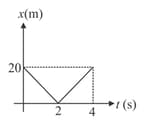Embibe Experts Solutions for Exercise 3: Assignment
Embibe Experts Physics Solutions for Exercise - Embibe Experts Solutions for Exercise 3: Assignment
Attempt the practice questions from Exercise 3: Assignment with hints and solutions to strengthen your understanding. Gamma Question Bank for Medical Physics solutions are prepared by Experienced Embibe Experts.
Questions from Embibe Experts Solutions for Exercise 3: Assignment with Hints & Solutions
The limiting friction between two bodies in contact is independent of-
A heavy box is slid across a rough floor with an initial speed of It stops moving after seconds. If the average resisting force of friction is the mass of the box (in ) is
If a block moving up an inclined plane at with a velocity of stops after then coefficient of friction will be nearly
A metallic chain long lies on a horizontal surface of a table. The chain starts sliding on the table if (or more of it) hangs over the edge of a table. The correct value of the coefficient of friction between the table and the chain is
A block of mass placed on an inclined plane of angle of inclination slides down the plane with constant speed. The coefficient of kinetic friction between block and inclined plane is
The position-time graph of a particle of mass moving along -axis is as shown in the figure. The magnitude of impulse on the particle at is

The rate of mass of the gas emitted from rear of a rocket is initially If the speed of the gas relative to the rocket is and mass of rocket is then the initial acceleration of the rocket is (Take )
A car is moving round a curve of radius without slipping on a banked road with Assuming the coefficient of friction between the road and tyres to be What is the maximum speed with which the car can move? (Take )
